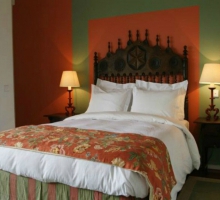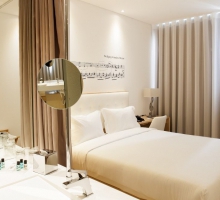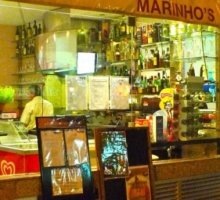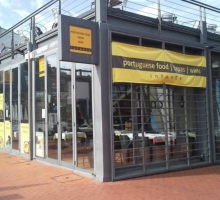Equipment Type: Indoor
Location: Campo dos Mártires da Pátria, 4050-368 Oporto
GPS: N 41 145093, W 8 616114
Accessibility: Metro: Line D (São Bento station); Bus: lines 200, 205, 207.507, 703
Brief description: It is a granite building dating from 1582. It was rebuilt in neoclassical style in 1767 by initiative of João de Almada e Melo, according to the architect Eugénio dos Santos project. It was funded by the Companhia Geral da Agricultura das Vinas do Alto Douro (General Company of Agriculture of the Upper Douro Vineyards). It grows in a geometric succession of windows - 103 in all floors. It has a polygonal plan with four façades, two of them guarding the two functions of the building: the noble façade, in S. Bento Street, is the entrance to the Court of Appeal sector. The other entrance, in Cordoaria, was built for the prisioner’s direct passage, and is now the main entrance of the building. Names like Camilo Castelo Branco, one of the most famous Portuguese writers, jailed for adultery, and the famous Zé do Telhado, arrested for theft, they were jailed in this prision. In order to be adapted to the current functions of the Centro Português de Fotografia (Portuguese Photography Center), the building suffered restoration works coordinated by Eduardo Souto de Moura and Humberto Vieira, between 1999 and 2002. The building suffered restoration work, coordinated by Eduardo Souto de Moura and Humberto Vieira, in order to be adapted to the current functions of the Centro Português de Fotografia (Portuguese Photography Center). The Center has an exhibition space and guided tours of the building are an option for the visitors.
Location: Porto
Location: Campo dos Mártires da Pátria, 4050-368 Oporto
GPS: N 41 145093, W 8 616114
Accessibility: Metro: Line D (São Bento station); Bus: lines 200, 205, 207.507, 703
Brief description: It is a granite building dating from 1582. It was rebuilt in neoclassical style in 1767 by initiative of João de Almada e Melo, according to the architect Eugénio dos Santos project. It was funded by the Companhia Geral da Agricultura das Vinas do Alto Douro (General Company of Agriculture of the Upper Douro Vineyards). It grows in a geometric succession of windows - 103 in all floors. It has a polygonal plan with four façades, two of them guarding the two functions of the building: the noble façade, in S. Bento Street, is the entrance to the Court of Appeal sector. The other entrance, in Cordoaria, was built for the prisioner’s direct passage, and is now the main entrance of the building. Names like Camilo Castelo Branco, one of the most famous Portuguese writers, jailed for adultery, and the famous Zé do Telhado, arrested for theft, they were jailed in this prision. In order to be adapted to the current functions of the Centro Português de Fotografia (Portuguese Photography Center), the building suffered restoration works coordinated by Eduardo Souto de Moura and Humberto Vieira, between 1999 and 2002. The building suffered restoration work, coordinated by Eduardo Souto de Moura and Humberto Vieira, in order to be adapted to the current functions of the Centro Português de Fotografia (Portuguese Photography Center). The Center has an exhibition space and guided tours of the building are an option for the visitors.
Location: Porto




